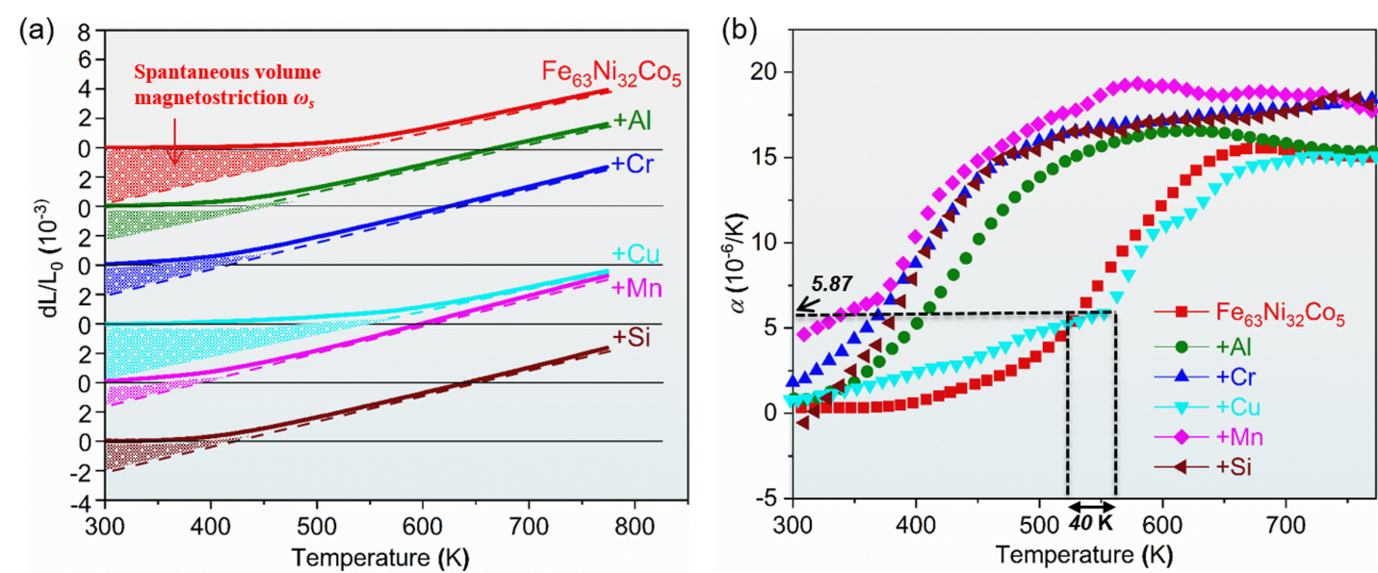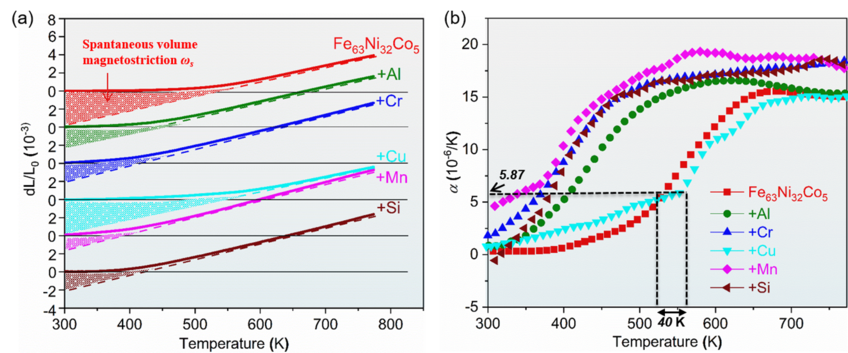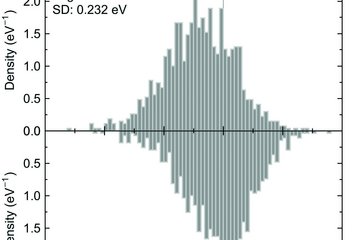Combinatorial development of Invar alloys via rapid alloy prototyping
In this project, we work on the use of a combinatorial experimental approach to design advanced multicomponent multi-functional alloys with rapid alloy prototyping. We use rapid alloy prototyping to investigate five multicomponent Invar alloys with 5 at.% addition of Al, Cr, Cu, Mn and Si to a super Invar alloy (Fe63Ni32Co5; at.%), respectively. All the new alloys show a typical Invar effect with low TEC around room temperature.
The original Invar alloy Fe65Ni35 (at.%), which shows an extremely low thermal expansion coefficient (TEC; ~1.6×10-6 K-1) around room temperature, was first discovered by Guillaume around 1890 [1]. Since then, it has been widely used in various fields ranging from standardization of the metric system to liquefied natural gas (LNG) containers and long-distance power cables [2]. To develop novel Invar alloys in the practically infinite compositional space of multicomponent alloys, rapid alloy prototyping is used to investigate five multicomponent Invar alloys with 5 at.% addition of Al, Cr, Cu, Mn and Si to a super Invar alloy (Fe63Ni32Co5; at.%), respectively. All alloys show abnormally low thermal expansion coefficients below the Curie temperature and saturation magnetization deviating from the Slater-Pauling curve, revealing their Invar-behavior. The relationships among valence electron concentration, magnetic properties, and Invar behavior of the various multicomponent alloys are discussed. The Invar alloy with Cu addition is particularly promising, as it shows a 40 K larger temperature range (above room temperature) of low thermal expansion coefficient (<5.87×10-6 K) and slightly higher hardness compared to the conventional super Invar alloy. The work thus also successfully demonstrates the capability of using rapid alloy prototyping for developing multicomponent multi-functional alloys.













